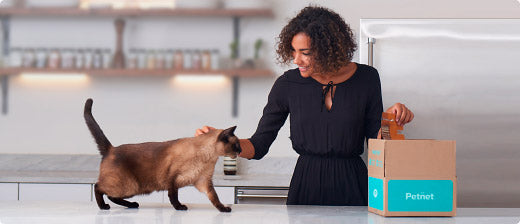Far too many people are not aware of the amount of food their dogs really require each day to achieve and maintain a healthy weight. According to the Association for Pet Obesity Prevention, a majority of dogs in the U.S. are overweight. Just like with people, an overweight dog will have a shorter life span— up to 2 years shorter— and a lower quality of life.
There are numerous health problems related to canine obesity, including arthritis, kidney and gastrointestinal disease, and even cancer. Furthermore, having an overweight dog can be a costly proposition to the pet owner. Extra food and medical bills can easily surpass $1,000 per year or more – expenses that you would not incur if you had a leaner, healthier pet. Here are 5 steps you can follow to help you determine proper portions for your pet.
1. Start with a Vet checkup and agree on an ideal weight.
Consult with your veterinarian so that they can assess the overall health of your dog. Make sure to inform your vet of any previous orthopedic issues or other health issues if they do not have your dog’s full history. Use the canine body condition guide for a visual of how a dog’s body should look.
2. Determine how many calories your dog burns per day at their ideal weight.
Once you have your ideal weight, you will use this number to determine your dog’s average calorie burn each day. There are several key factors which will determine the number including your dog’s age, weight, and activity level. Most normal dogs will burn 85-90% of their daily calories just to support their bodies’ basal metabolic processes (e.g. respiration, cardiovascular function) and about 10-15% from exercise. More active dogs, working dogs or those that participate in hunting, agility, dock diving, or other sports, will burn more from exercise.
The table below shows approximate daily calorie requirements for different sized dogs who exercise lightly (e.g. walking, slow jogging) for 30 minutes each day.
| Weight(lbs) | Daily Calories Burned |
| 10 | 300 |
| 30 | 685 |
| 50 | 1,000 |
3. Determine daily feeding calorie amounts.
Calculating the number of calories you should feed your pet requires one last step. If your dog is at their ideal weight, you should feed them the same number of calories as they burn each day. If your dog is overweight, you should feed about 75% of this amount until they reach their target weight and then you can increase their feeding to 100% of their daily calorie burn thereafter. Similarly, if your dog is underweight, you should feed them 125% of their required calories until they reach their target weight and then decrease their feeding to 100% of their daily calorie burn thereafter.
| Dog Condition | % of Target Calories | Daily Feeding Calorie Amount (assuming daily burn = 1,000) |
| Ideal Weight | 100 | 1,000 |
| Overweight | 0.75 | 750 |
| Underweight | 1.25 | 1,250 |
4. Determine a daily feeding plan of foods and treats.
The next step requires that you know the calorie amounts of your dog’s food and treats. Find the caloric values and the units of measurement for the food and treats that you give your dog. In most cases, the units of measurement are per 8 oz cup, for foods, and per each treat, in the case of treats.
Once you have that number, you simply divide your dog’s target calorie amount by the calories in a cup of their food and you will know the proper amount to serve each day. For instance, if your dog should be fed 750 calories per day and your dog food has 250 calories per cup, you would feed them 3 (750/250) cups per day.
If you plan on serving treats, or if you serve your dog more than one food (e.g. if you mix dry and canned), make sure to account for these as well and reduce your food portions accordingly.
Obviously, a key aspect of the feeding plan is to accurately measure your servings. Don’t guess—get a measuring scoop. Our SmartFeeder can help dole out correct portions even if you are still at the office! For treats, we recommend that you dole out the day’s allotment into a plastic bag. Once the bag is empty, no more treats. Be precise!
5. Stick to the program for 4 weeks and adjust if necessary.
As you know, life is not predictable. Maybe your dog is exercising more (or less) than you planned, or maybe you are not really measuring accurately, or maybe the climate where you live is such that your dog’s metabolism is a little different than normal. In any case, we recommend that you create a plan, stick with it for 4 weeks, and observe the results. If your dog’s weight is not reacting the way that you had hoped, take stock and reassess. As always, be honest, and make adjustments as necessary.
To repeat a widely used expression, it is “not rocket science” to determine proper serving portions for your dog. It is, however, extremely important for dog owners to keep their dogs are fit and trim so they can live a long and active life.

 Food
Food
 Food
Food
 Food
Food
